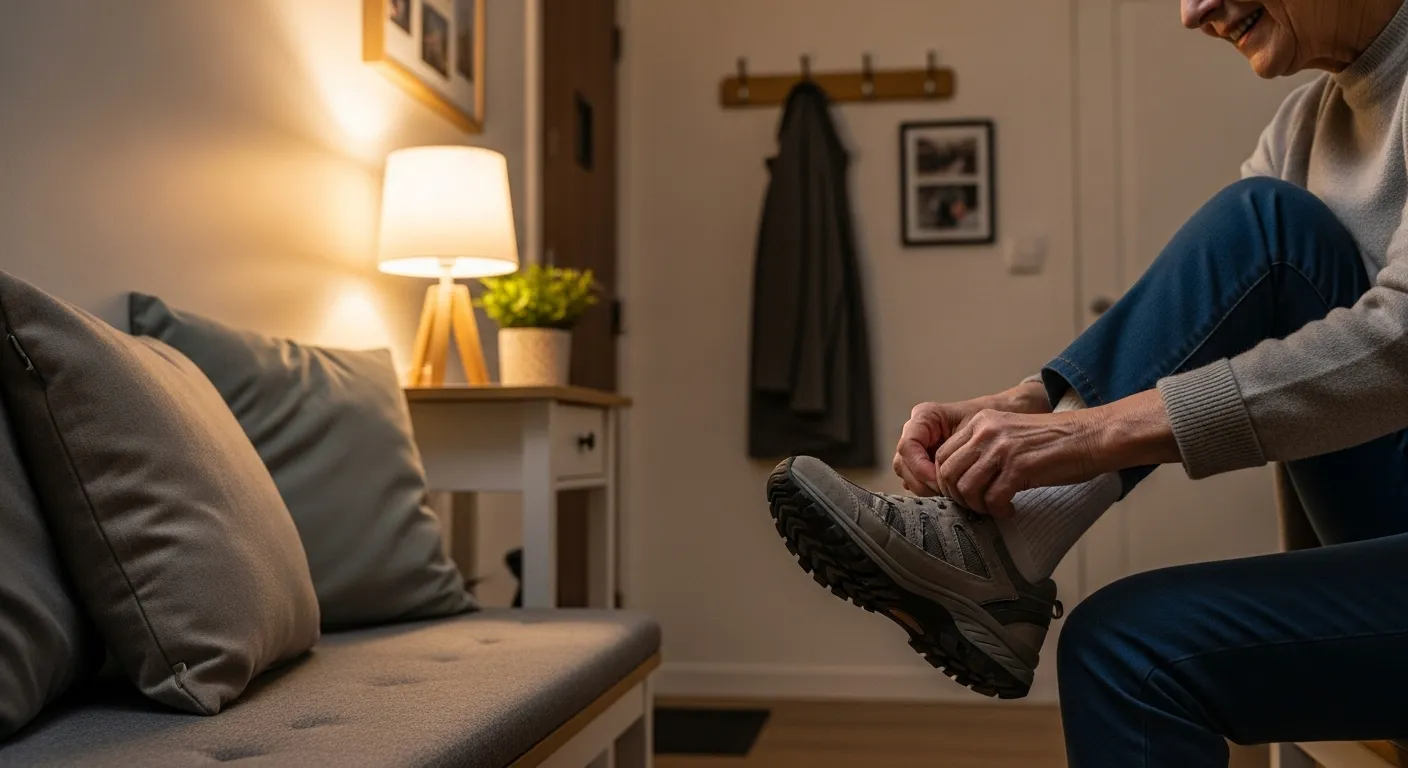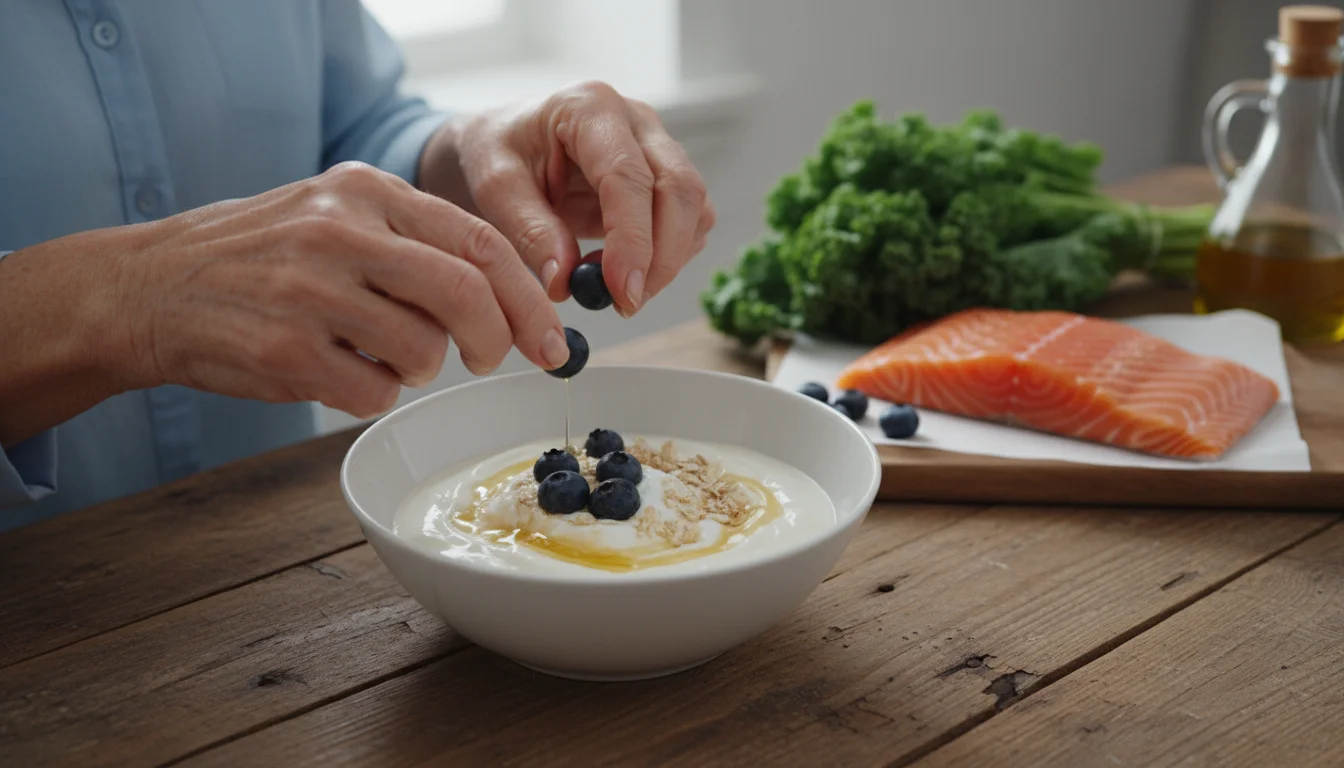
A Step-by-Step Guide to Exploring Non-Medication Pain Relief Safely
Creating a gentle yet effective pain management plan involves layering different strategies. The goal is to find a combination that works for your unique needs. Remember to start slowly with any new activity and listen to your body—it is your best guide.

1. Embrace Gentle Movement
The old advice for pain was often to rest and avoid movement. We now know that, for most chronic conditions like arthritis, gentle motion is one of the best medicines. Movement helps lubricate joints, strengthen supporting muscles, and release endorphins, your body’s natural pain relievers.
- Chair Stretches: You don’t need to get on the floor to stretch. While seated, you can perform gentle neck rolls (dropping your chin to your chest and slowly rolling your head from one shoulder to the other), shoulder shrugs, and ankle circles.
- Walking: A simple walk, even for just 10-15 minutes a day, can improve circulation and reduce stiffness. Be sure to wear supportive, comfortable shoes and choose a flat, safe surface.
- Water Aerobics: The buoyancy of water supports your body, taking the pressure off of aching joints in your knees, hips, and back. This makes it an ideal environment for gentle exercise. Many community centers and local YMCAs offer classes specifically for seniors.
Safety First: Always warm up with a few minutes of slow walking or marching in place before stretching. Never stretch to the point of sharp pain. The feeling should be a gentle pull, not a strain. If an exercise causes pain, stop immediately.

2. Use Heat and Cold Therapy
Applying heat or cold is one of the oldest and most reliable natural remedies for pain. They work in different ways and are used for different types of pain.
- Heat Therapy: Use a warm towel, heating pad (on a low setting), or warm bath for chronic stiffness and achy muscles. Heat increases blood flow to the area, which helps relax tight muscles. It is excellent for arthritis stiffness, especially in the morning.
- Cold Therapy: Use a gel pack, bag of frozen vegetables, or ice pack for acute pain, swelling, and inflammation. Cold constricts blood vessels, which can numb the area and reduce swelling. It’s often recommended after an activity that has flared up a joint.
Safety First: Never apply heat or cold directly to your skin. Wrap the pack in a thin towel. Limit applications to 15-20 minutes at a time to prevent skin damage. Do not use heat on a new injury that is swollen, and avoid cold therapy if you have circulatory problems.

3. Calm Your Nervous System with Mind-Body Practices
Chronic pain isn’t just a physical sensation; it has a strong emotional and mental component. Stress, anxiety, and frustration can tighten muscles and make pain feel worse. Mind-body techniques help calm the nervous system, which can change your perception of pain and improve your ability to cope.
- Deep Breathing: Sit or lie down comfortably. Place one hand on your belly. Inhale slowly through your nose for a count of four, feeling your belly rise. Hold your breath for a count of four. Then, exhale slowly through your mouth for a count of six, feeling your belly fall. Repeat for 5-10 minutes. This simple act can lower your heart rate and ease muscle tension.
- Meditation and Guided Imagery: Meditation involves focusing your attention to achieve a state of calm. There are many free guided meditations available online specifically for pain relief. Guided imagery involves picturing a peaceful, serene place in your mind, engaging all your senses to transport yourself there, providing a mental escape from the pain.

4. Fight Inflammation with Your Diet
Inflammation is a key driver of many types of chronic pain, particularly arthritis. While no diet is a magic cure, what you eat can have a significant impact on the levels of inflammation in your body. Focus on a diet rich in whole, unprocessed foods.
- Foods to Include: Fatty fish (like salmon and tuna), leafy green vegetables (spinach, kale), berries, nuts (walnuts, almonds), and olive oil. Spices like turmeric and ginger are also known for their anti-inflammatory properties.
- Foods to Limit: Processed foods, sugary drinks, fried foods, and refined carbohydrates (white bread, pastries) can promote inflammation.
Making small, sustainable changes is more effective than a drastic overhaul. Try adding a handful of berries to your breakfast or swapping one processed snack for a handful of nuts each day.

5. Consider Professional Complementary Therapies
For some, professional hands-on therapies can provide significant relief. It is vital to seek out licensed and certified practitioners with experience in senior healthcare.
- Physical Therapy: A physical therapist can design a personalized exercise program to improve your strength, flexibility, and range of motion in a safe, supervised environment.
- Acupuncture: This ancient Chinese practice involves inserting very thin needles into specific points on the body. It is believed to work by stimulating the body’s natural painkillers and is recognized by the National Institutes of Health as a potentially useful therapy for conditions like osteoarthritis and low back pain.
- Massage Therapy: A gentle massage from a licensed therapist can help relieve muscle tension, improve circulation, and reduce stress. Be sure to communicate your pain points and any sensitive areas.


















